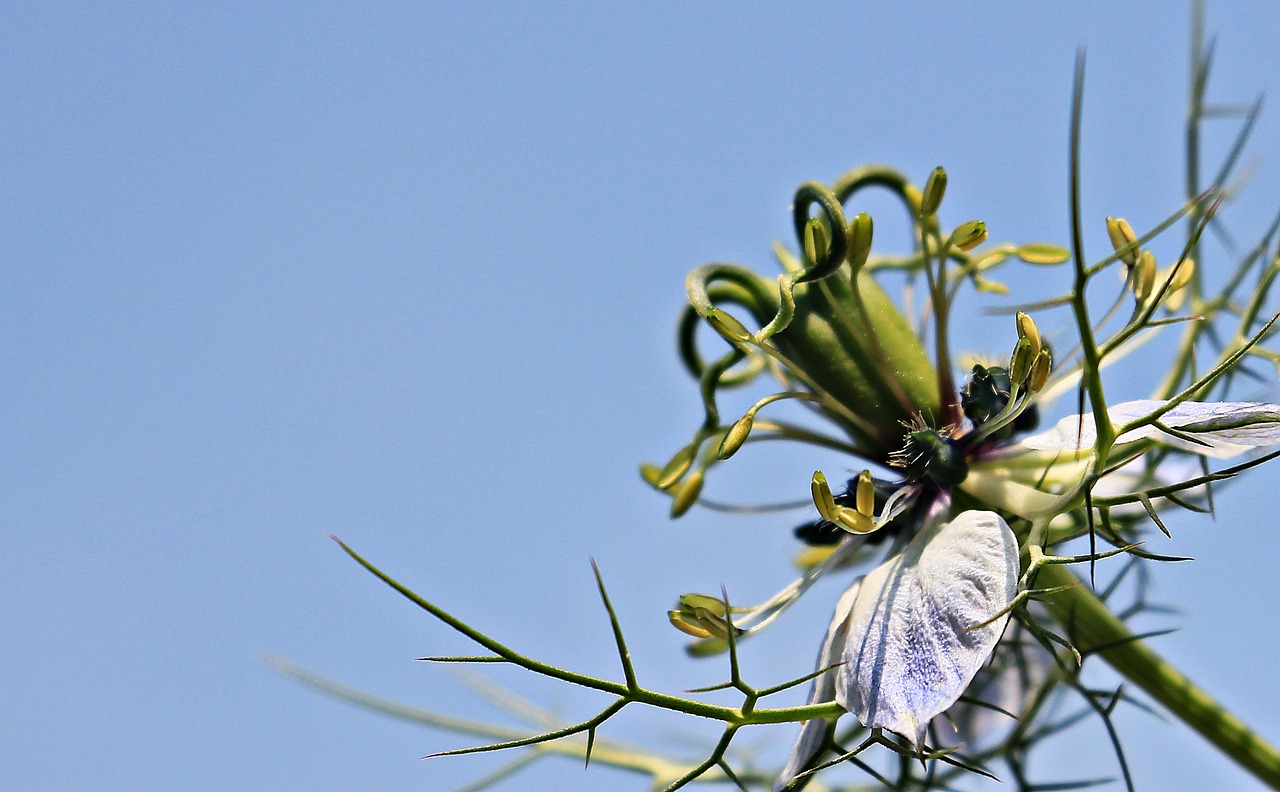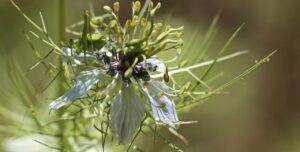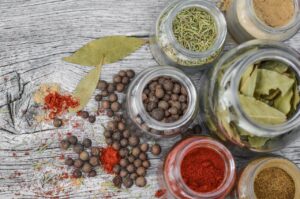Cumin
Overview
Cumin is a delightfully fragrant herb from the Apiaceae family, which includes familiar faces like parsley and carrots. This versatile plant is beloved for the warm, earthy notes its seeds impart in cuisines across the globe and is also treasured for its potential health advantages. Whether ground into spices for culinary magic or explored for its medicinal properties, cumin is a global favorite with a rich history to match its rich flavor profile.

Characteristics
Known for its flavorful seeds, culinary versatility, and a range of medicinal benefits within the Apiaceae family.
Region
Native to the Mediterranean region, grown in Turkestan and the Irano-Turanian Region, and widely cultivated in India, China, and Mexico.
Natural Habitat
Cumin typically grows in fields or pastures in Mediterranean climates.
Cultivation
Prefers full sun, moderate watering, and well-drained soil.
Uses and Benefits
Cumin’s warm, earthy seeds are a culinary treasure, livening up dishes with their distinctive flavor. It graces cuisines from Asian to Mexican, and Indian to Middle Eastern, bringing a unique taste to any meal2 4.
Beyond its role in the kitchen, cumin has also earned a place in the realm of traditional health remedies. Its purported medicinal properties, while not exhaustively researched, suggest benefits that complement its culinary uses. This includes aiding digestion, providing iron, and even boasting antioxidant effects, according to some studies1. Always consult with a healthcare provider before using herbs for medicinal purposes to ensure they’re appropriate for your individual health needs.

Cultivation Tips
Cultivating cumin requires attention to its favored Mediterranean conditions. Choose a sunny spot as cumin loves plenty of light.
Ensure the soil is well-drained; sandy or loamy soils work best. Plant the seeds in the spring, after the last frost has passed, allowing them to warm up in the increasing temperatures.
Water them moderately – cumin doesn’t like to sit in wet soil, so be careful not to overdo it. As an annual, remember you’ll need to replant each year to continue enjoying its delights in your garden2.
Seasonal Considerations
Cumin plants favor a slice of the Mediterranean climate, hinting that they savor the warmth and sun. Being annuals, they make their grand appearance each spring, asking for a renewed spot in your garden every year2. As the seasons turn, these plants reach for the sky (well, up to two feet, anyway) and burst into bloom with delicate flowers during the heart of summer. Strategic planting after the last frost will set the stage for a hearty cumin harvest when the weather is balmy and warm. It’s ideal, then, to mark your calendars for spring planting, ensuring that your cumin has ample time to soak in the summer sun and mature into the flavorful spice we all adore.
Keep in mind, the cumin’s cozy relationship with the Mediterranean doesn’t mean it can’t adapt; with the right care, it can thrive in various settings, so long as the light and warmth mimic its natural habitat.

Issues and Troubleshooting
While cumin is generally hardy, growers can sometimes face issues with these fragrant plants. One common problem is inadequate drainage which can cause the roots to rot, hindering the plant’s growth. Ensuring well-drained soil can mitigate this.
Pests can also pose a challenge; aphids and spider mites are attracted to cumin and can be managed by natural predators or organic pesticides2. Diseases like wilt or blight may occur, especially in very humid conditions. Preventive measures include rotating crops annually and avoiding overhead watering to keep the foliage dry2.
Nutrient deficiencies present another hurdle. Yellowing leaves may indicate a lack of essential nutrients. This can often be remedied with a balanced fertilizer. Being aware of these common issues can help you grow robust and healthy cumin plants.
History and Folklore
Cumin’s tale weaves through history and folklore, carrying whispers of ancient origins and mystical practices. With roots in Turkestan, this aromatic herb traversed to Egypt, Ethiopia, and the Mediterranean, leaving its imprint on these rich cultures1. It was so valued that it played a role in the daily lives of the pharaohs, who considered its warm, earthy seeds a symbol of love and fidelity. Later, it spread its aroma to other corners of the globe, becoming an integral part of Indian, Chinese, and Mexican cuisines5.
Cumin’s mystique extended beyond the kitchen, as it was believed to possess protective powers and was even used in ancient spells1. Nowadays, nestled in spice racks around the world, cumin continues to add depth to dishes and spark curiosity with its storied past.
References
1. Characteristics of cumin plant – Botanical online, https://www.botanical-online.com/en/medicinal-plants/cumin-cuminum-cyminun
2. Growing Cumin: All About Planting, Care, Problems and Harvesting, https://morningchores.com/growing-cumin/
3. Cumin – Wikipedia, https://en.wikipedia.org/wiki/Cumin
4. Cuminum cyminum – North Carolina Extension Gardener Plant Toolbox, https://plants.ces.ncsu.edu/plants/cuminum-cyminum/
5. Cumin | Definition, Seed, Spice, Origin, Uses, & Facts, https://www.britannica.com/plant/cumin
Nicolas Duval
Nicolas is a passionate advocate for nature and the art of wildcrafting. His dedication shines through in Wildcraftia, a website he meticulously crafted to serve as a haven for nature enthusiasts worldwide. Driven by a deep appreciation for nature’s connection to humanity, Nicolas embarked on his journey in 2011 with SmokableHerbs, a platform showcasing his love for nature’s bounty. Building upon this foundation, he established Smokably, a thriving online store offering premium herbs and blends to a global audience.
